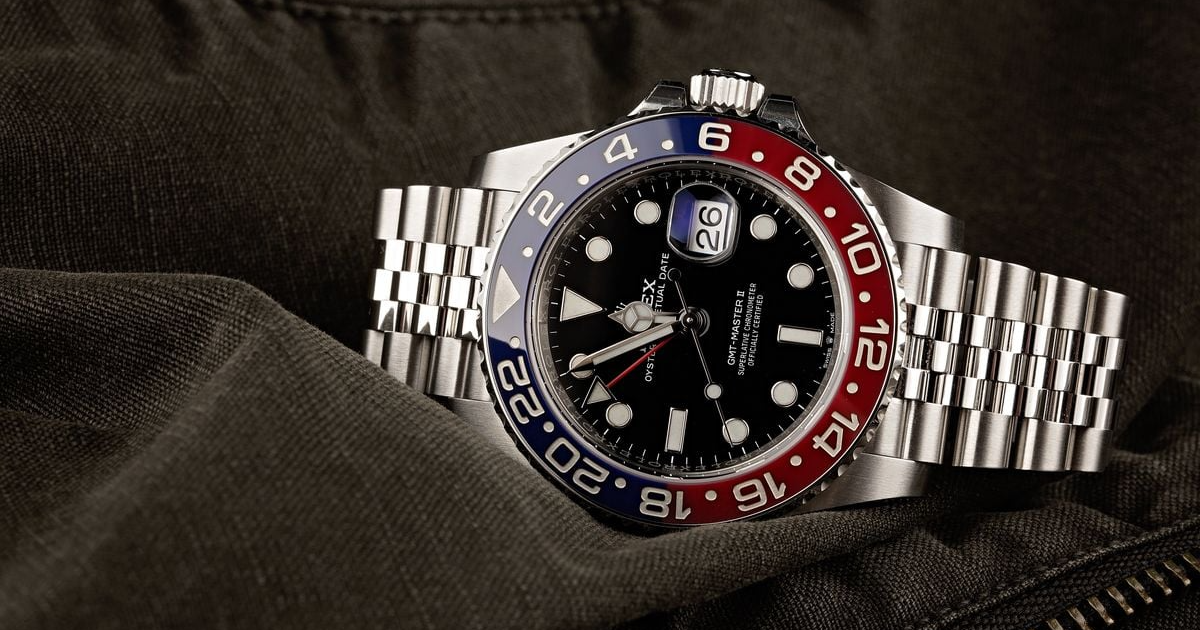Watch Guides
Ceramic vs Stainless Steel Bezel
When it comes to choosing a watch, one of the key decisions you’ll face is the material of the watch bezel. Two popular choices in the world of luxury watches are ceramic and stainless steel. Each material has its own set of characteristics, advantages, and drawbacks. In this comprehensive guide, we’ll delve into the differences between ceramic and stainless steel watch bezels to help you make an informed decision.
Ceramic Watch Bezels
Overview
Ceramic has gained immense popularity in the watchmaking industry due to its durability, scratch resistance, and aesthetic appeal. Ceramic watch bezels are made from a high-tech material known as zirconium oxide, which is extremely hard and resistant to scratches. This makes ceramic an excellent choice for individuals who lead an active lifestyle or those who simply want a watch that looks pristine for years to come.
Advantages
- Durability: Ceramic is highly durable and resistant to scratches, making it ideal for daily wear.
- Scratch Resistance: Ceramic is one of the most scratch-resistant materials used in watchmaking, ensuring that your watch bezel maintains its pristine appearance.
- Hypoallergenic: Ceramic is hypoallergenic, making it suitable for individuals with sensitive skin.
- Color Options: Ceramic can be produced in a wide range of colors, allowing for greater customization and aesthetic appeal.
- Fade Resistance: Ceramic is resistant to fading, ensuring that your watch maintains its vibrant color over time.
Drawbacks
- Brittleness: While ceramic is highly scratch-resistant, it can be brittle and prone to shattering upon impact.
- Cost: Ceramic watches tend to be more expensive than their stainless steel counterparts due to the complexity of manufacturing and the material’s premium properties.
- Limited Repair Options: In the event of damage, repairing a ceramic watch bezel can be challenging and costly compared to stainless steel.
Stainless Steel Watch Bezels
Overview
Stainless steel has long been a staple in watchmaking due to its durability, versatility, and timeless appeal. Stainless steel watch bezels are crafted from an alloy of steel and chromium, known for its strength and corrosion resistance. Stainless steel watches are renowned for their ability to withstand daily wear and tear while maintaining a classic appearance.
Advantages
- Durability: Stainless steel is highly durable and can withstand everyday activities without showing significant signs of wear.
- Versatility: Stainless steel watches are versatile and suitable for both casual and formal occasions.
- Cost-Effective: Stainless steel watches are generally more affordable than ceramic watches, making them accessible to a wider range of consumers.
- Repairability: In the event of scratches or minor damage, stainless steel watch bezels can be polished and restored relatively easily.
- Classic Appearance: Stainless steel has a timeless appeal and is often associated with luxury and sophistication.
Drawbacks
- Scratch Prone: While stainless steel is durable, it is not as scratch-resistant as ceramic, and minor scratches may be more visible on the surface.
- Potential for Corrosion: Despite its corrosion resistance, stainless steel can still be susceptible to corrosion in certain environments, especially if not properly cared for.
- Limited Color Options: Stainless steel watches are typically available in silver or black finishes, limiting customization compared to ceramic.
Which Material Is Right for You?
Considerations
- Lifestyle: If you lead an active lifestyle or work in environments where your watch may be subjected to impact or abrasion, ceramic’s scratch resistance may be a significant advantage.
- Aesthetic Preferences: Consider the color options and aesthetic appeal of each material. Ceramic offers a wider range of colors, while stainless steel has a classic and versatile appearance.
- Budget: Your budget may also play a role in your decision. Ceramic watches are often more expensive than stainless steel watches.
- Maintenance: Consider the maintenance requirements of each material. While ceramic is more resistant to scratches, it can be challenging to repair if damaged. Stainless steel, on the other hand, is easier to maintain and repair.
Conclusion
Both ceramic and stainless steel watch bezels offer unique advantages and appeal to different preferences and lifestyles. Ultimately, the choice between the two materials depends on your priorities regarding durability, aesthetics, budget, and maintenance. Whether you opt for the scratch-resistant allure of ceramic or the timeless appeal of stainless steel, investing in a quality watch with the right bezel material ensures lasting enjoyment and style.
In conclusion, both ceramic and stainless steel watch bezels have their own set of advantages and drawbacks. Your choice should be based on your lifestyle, aesthetic preferences, budget, and maintenance considerations. Whether you prioritize scratch resistance and color options with ceramic or prefer the classic appeal and affordability of stainless steel, both materials offer durability and style for your timepiece.







